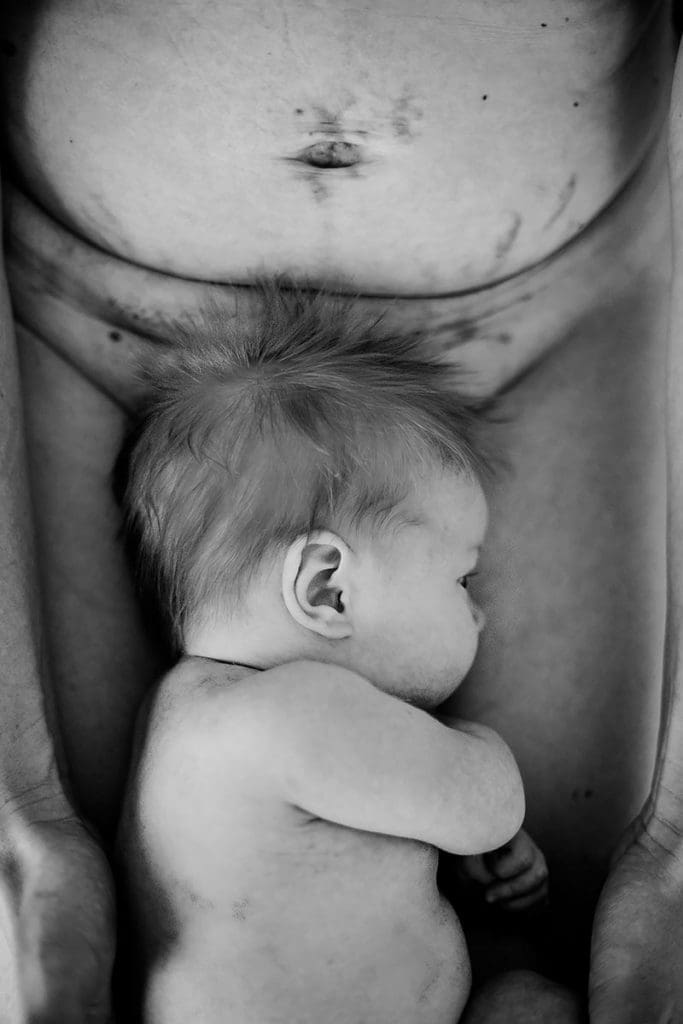Being abdominal surgery, pain in the early months is very common after a caesarean section (C-section) and needs to be managed with rest, pain relief, and activity modifications.
Common symptoms women experience include:
- pain
- numbness
- pulling, and
- altered sensation over their incision and in the surrounding tissue.
For the majority of women, this pain will subside by 3-6 months, but for approximately 11% of women, incision wound pain will persist for at least 12 months.1 However, women can also experience pain elsewhere such as back pain (17.5% of women) and chronic pelvic pain; including pain with sexual function and using tampons (9.9%) 12 months after a C-section.
If you experience ongoing abdominal wound pain, tightness, numbness or associated pain such as back or pelvic pain, your first steps are to seek help from your obstetrician, GP or women’s health physio for an assessment.
While having one C-section often results in future births occurring via C-section, that does not always need to be the case. Vaginal birth after caesarean or ‘VBAC’ are being more commonly considered for women in Australia who have previously had a C-section but would like to try for a successful vaginal delivery in a subsequent birth. It is important to educate yourself with your options and seek advice on whether you may be a good candidate for a VBAC if it’s something you would like.

Donate via PAYPAL Today
Visit our Paypal donation page to give a one-off donation. Donations are tax-deductible and you will receive a receipt for your as soon as it is processed.
Related Links
The unexpected experience of an emergency C-Section
For many women with uncomplicated pregnancies, a lot of time is spent with their midwife, GP or obstetrician planning for a vaginal delivery. Unfortunately, as part of this planning, discussions about what an emergency C-section is, what it involves and why it may be needed is often not discussed with women. Consequently, an emergency C-section can be an unexpected outcome. In this moment, women go through an experience of a difficult and complicated vaginal birth that results in being rushed into an operating room, and being given a spinal or epidural anaesthesia, and in some cases a general anasthaetic.
Women may feel powerless and are unaware of what is occurring to them as doctors are needing to work quickly. As a result, some women can experience emotional trauma in addition to physical trauma following an emergency C-section, including feelings of guilt, failure, disappointment in the healthcare system and disappointment in their body.
Post-traumatic stress disorder (PTSD) is a common experience for women following an emergency C-section, with research suggesting that approximately 1 in 5 women develop PTSD even when the baby is delivered safely.2
If you feel like you are not coping emotionally following an emergency C-section, it is important that you reach out to your support network- friends/family and healthcare workers, including your GP.
Signs include:
- Guilt
- Anxiety
- Nightmares
- Difficulty going to or staying asleep
- Social isolation or withdrawing from pleasurable activities
- Hyperarousal
- Intrusive traumatic memories of the event
Learn more about psychological birth truama.
Recovery post caesarean
It is import to seek advice regarding movement and recovery post C-Section by a specialised women’s health physio, especially if you have any ongoing pain. Below are a few tips on how to get started:
Listen To Your Body
It is normal to experience pain in the first few weeks post C-section. The amount of pain experienced will differ from woman to woman. Take pain relief as required in the early days, as this will allow you to gently move around more comfortably. You will become more mobile each day, but be sure to listen to your body, if you over-do it you may experience more pain or swelling around your incision, take that as your cue to take a break.
Catch Up On Some Sleep
This one is easier said then done, but if you have some support at home, aim for a nap per day, your body is recovering from abdominal surgery and needs the rest to help with healing.
Be Mindful Of How You Move
Aim to log roll out of bed to avoid any extra pressure over your incision. If you are standing up from a chair, gently contract your lower abdominals or use your hand to support your belly to give your incision some extra support.
Consider Using Compression Support Garments
Support shorts or leggings such as SRC or Solidea provide compression around your abdominals and pelvis. The compression can help make your tummy feel more comfortable and promote blood flow to the incision for healing – a women’s health physio can guide you with these.
Gentle Movement
As you begin to feel more comfortable, you can begin going for short walks with a light pram and gentle stretching.
Massage Your Scar
Your incision may feel numb or tender, you may also notice sensations of tightness or pulling on one side as it heals. The aim of the massage is to reduce adhesions and scar tissue, promote healing and desensitise the incision area. Your physiotherapist can show you how to massage your scar, you will need to use a small amount of oil (bio-oil or olive oil work well), or cream of your choice. Apply a moderate amount of pressure over and around your scar, it should be tolerable enough to breathe comfortably, and feel more comfortable as you continue. Aim for 3 minutes daily once your incision has fully closed and you’ve had it checked by your GP or obstetrician.

